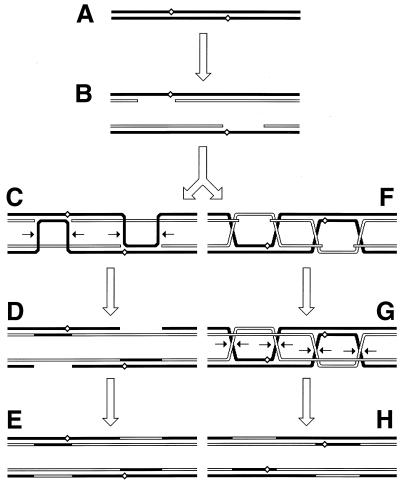FIG. 14.
Experimentally established principles of the daughter strand gap repair in E. coli. Solid lines indicate parental DNA strands; open lines indicate newly synthesized daughter DNA strands; diamonds indicate thymine dimers; small horizontal arrows indicate single-strand scissions required to resolve the joint molecules. (A) A DNA molecule containing unrepaired noncoding lesions (for example, thymine dimers). (B) Replication of this molecule generates two molecules with single-strand gaps in the daughter strands opposite the lesions (538). Eventually, these gaps are repaired in a RecA-dependent way (606). (C to H) Experiments by Rupp et al. (539) had revealed that after gap closure, the newly synthesized strands are connected with the parental strands (strand exchange), suggesting a model for recombinational repair of daughter-strand gaps (C to E). Later, Ley (357) found that the gaps are transferred from the daughter strands to the parental strands, while Ganesan (199) found that the thymine dimers are transferred in the opposite direction, from the parental strands to the daughter strands, suggesting the formation and resolution of Holliday junctions (F to H).

